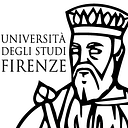Circular, Cultural and Creative City Index: a Comparison of Indicators-based Methods with a Machine-Learning Approach
From Firenze University Press Journal: Aestimum
Giuliano Poli, Department of Architecture, University of Naples Federico II
Eugenio Muccio, Department of Architecture, University of Naples Federico II
Maria Cerreta, Department of Architecture, University of Naples Federico II
Conceptual background
Cultural and creative cities deliver spatial, economic, and social benefits to their citizens by reinforcing the physical and digital environment, human capital, social networks, institutions, and regulatory frameworks. They host Cultural and Creative Industries (CCIs,) which contribute to 3% of the global GDP. However, it has been estimated that higher-income cities do not neces-sarily correlate with the higher number of people employed in cultural jobs, as opposed to lower-GDP cities, whereas about 10% of people are employed in creative and cultural sectors (Solutions for Youth Employment (S4YE), 2020, p.4). UNESCO and World Bank (2021) defined creative cities as the “places where culture, arts, cultural and creative industries (CCIs), diverse expressions, and imagination flourish and contribute to sustainable urban development and inclusive growth” (UNESCO and World Bank, 2021, p. 8). These cities are also rich in intrinsic values (Fusco Girard et al., 2019; Cerreta et al., 2022) and cultural capital, which embraces all the “Cultural goods serving as capital assets that, in combination with other inputs, contribute to the production of other cultur-al goods and services, jobs, and overall well-being of local communities” (UNESCO and World Bank, 2021, p. 8).
The Circular Economy (CE) model, based on the principle that nothing can be considered ‘waste’ in nature, and everything can become a ‘resource’, aims to make sustainable development principles operative. The United Nations introduced into the New Urban Agenda (United Nations, 2016), the final document of the Habi-tat III conference, the notion of CE as a general devel-opment model that impacts natural and social contexts while generating new economic wealth. This stimulates an indefinite extension of the resources’ life and the values of their use and promotes cooperation circuits among stakeholders. CE can be recognized as a gen-eral development model, capable of transforming linear urban metabolism into a new circular urban metabolism in which input and output flows are ‘closed’. Therefore, the concept of circular processes can be applied not only to the flows of matter and nature (zero-waste approach), but also to broader issues, such as economic models of investment/ re-investment, or political systems of mul-ti-level participatory governance. CE can and must be considered the engine of strategic planning develop-ment policies, as highlighted by strategies and measures adopted by the European Commission to stimulate the European path towards the CE (European Commission, 2015). The sectoral approach of waste cycle management with which the CE is associated must therefore be con-sidered an approach to the global organization of the city, its economy, its social system, and its governance to improve urban productivity.The Circular City Model incorporates the princi-ples of the CE, establishing a regenerative and acces-sible urban system. The closure of the cycles is, in fact, a fundamental concept at the basis of this model (Ellen MacArthur Foundation, 2015a). In addition, flexibility in the design of the built environment, collaborative/coop-erative behaviour, integration and recycling, and digital technology support for the circularization of processes are key concepts of the Circular City (Ellen MacArthur Foundation, 2015b; World Economic Forum, 2018).
The European Circular City Models are focusing their strategies and actions mainly on the sectors where the flows of materials are more consistent. Circular city models and, in particular, the experiences of Europe-an circular cities have highlighted the need to focus on “immaterial” flows relating to the human and cultural dimension (Fusco Girard and Nocca, 2019). The relationship between the CE and job creation is a key factor, highlighting the contribution of this model to improving the quality of life. Employment is also a key word linked to the concept of well-being: it contributes to making people ‘feel good’, not only for the economic aspects, but because it allows people to be in relationships with each other. Therefore, the challenge is to consider the cultural ‘waste’ as potential resources to favour new approaches to sustainable urban regeneration and thus to encourage autopoietic systems, which is capable of self-regenerating. In particular, the cultural challenges for the transition to the circular city model concern norms, ideas, customs, and social behaviour of people (Williams, 2019). In this perspective, there is the need to determine evaluation approaches and tools, with particular concern on indicators, which represent one of the relevant tools for structuring an evaluation approach, allowing both to analyse existing phenomena and to evaluate impacts.
DOI: https://doi.org/10.36253/aestim-13880
Read Full Text: https://oaj.fupress.net/index.php/ceset/article/view/13880
